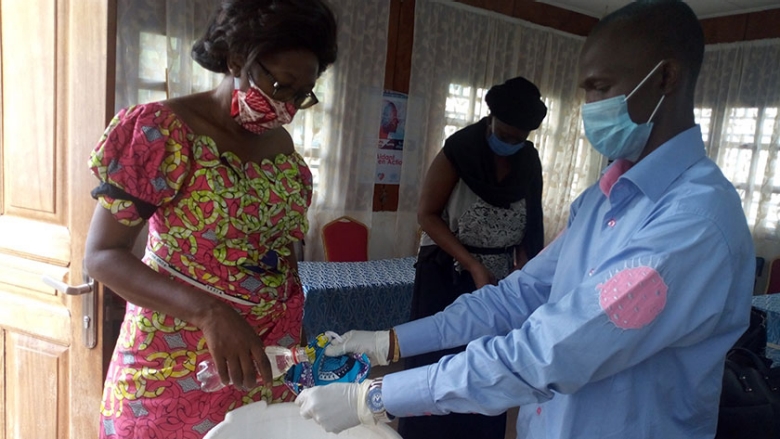1. Public debt continues to decline, although CAR remains at high risk of debt distress. The ratio of public debt-to-GDP fell from 63% in 2014 to 47.8% in 2019, thanks to the progressive economic recovery, arrears clearance, and limited new borrowing (Figure 1b). Domestic debt declined from 14.2% of GDP in 2017 to 10.6% in 2019 with domestic arrears' payment. External debt is also falling but at a slower pace. Debt is projected to remain sustainable over the medium term provided that the authorities continue implementing structural reforms once the COVID-19 crisis abates.
Figure 1. Annual real GDP growth rate and public debt
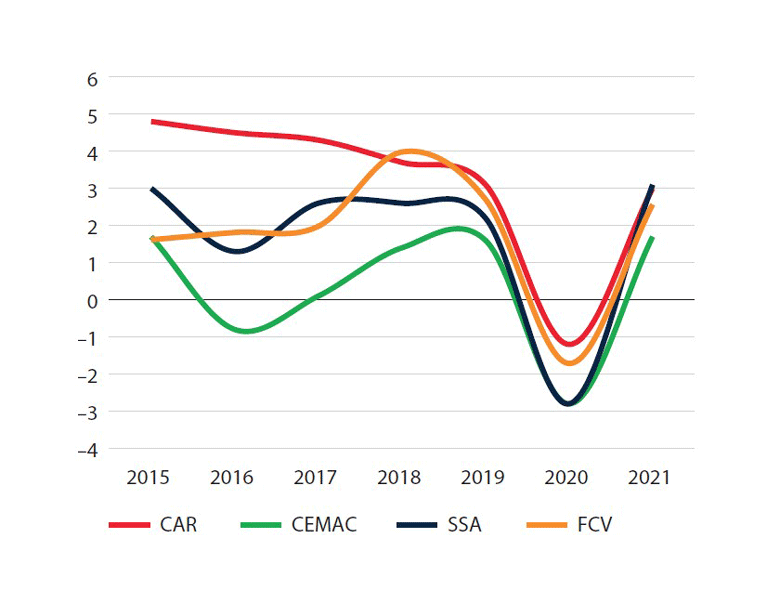
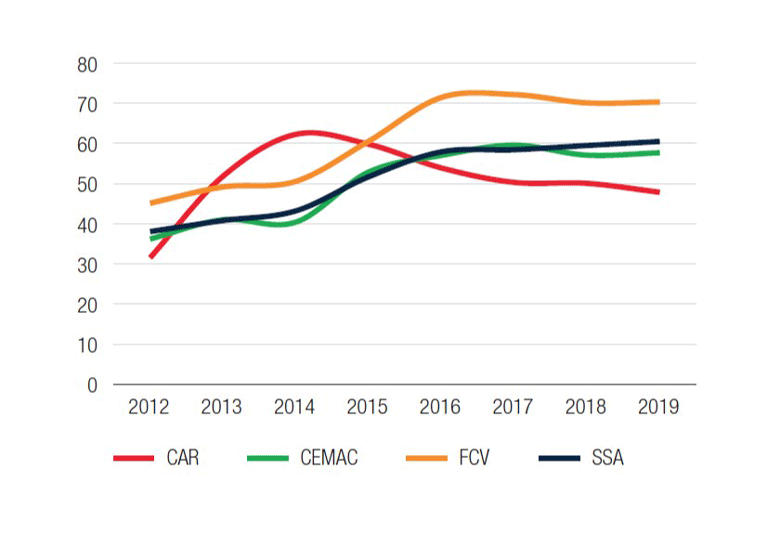
2. CAR needs to diversify its economy to build resilience, create jobs, and reduce vulnerabilities. The economy depends heavily on subsistence agriculture and the export of a few commodities (cotton, coffee, diamond, and timber), making the economy vulnerable to adverse shocks. Moreover, total exports and participation in the global value chain (GVC) have declined substantially since 2000 (Figure 2). Diversifying CAR’s economy is critical to achieving long-term sustainable development and strengthening resilience. Economic diversification can further reduce poverty and vulnerabilities by generating a wide array of employment opportunities throughout the economy. Economic diversification could also be a pathway to address the fragility trap and escape the vicious cycle of violence by supporting structural transformation, job creation, and greater economic opportunities, reducing grievances, frustration, and conflicts.
Figure 2. CAR’s exports and participation in global value chains, 2000–2018
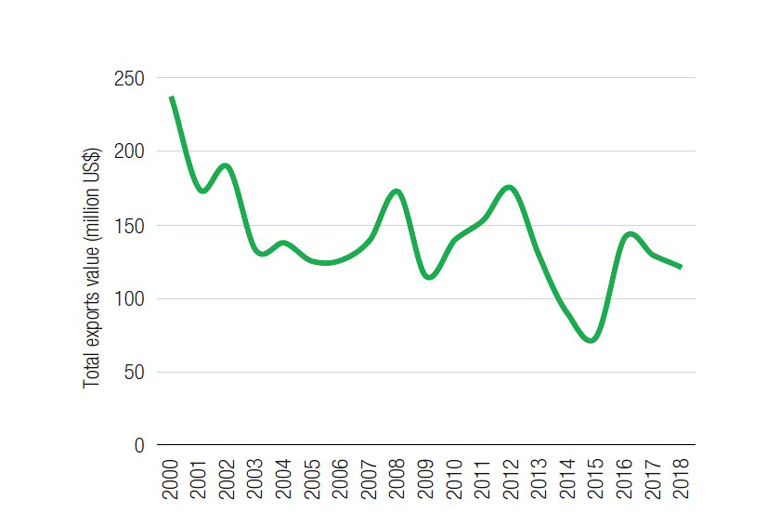
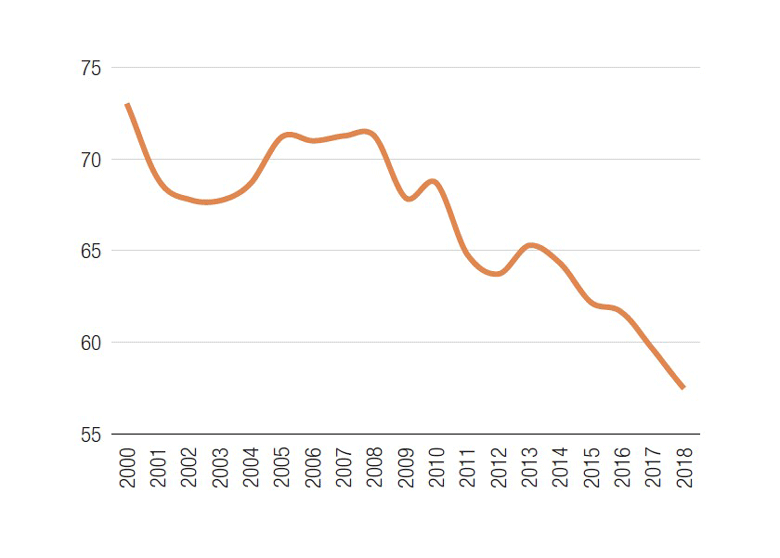
3. CAR could leverage the potential of the agriculture and forestry sectors as well as existing export opportunities to diversify its economy. CAR can upgrade existing exports and tap into emerging products in which the country has a relative comparative advantage. Key export products such as wood and cotton have a high potential for new specializations, as they open a path for broad-based diversification. There are a least ten “nearby” products related to the wood industry, such as plywood, cork-related products, shaped wood, fertilizers, and wood for decorative use. There is a significant opportunity to specialize in these products, as the know-how and capabilities required to produce them are similar to those currently used in the wood industry. Moreover, CAR could strengthen intra-regional trade to tap into the potential of the regional market with a potential estimated at $211 million.
4. Economic diversification needs to be supported by cross-cutting reforms and investments in enabling sectors. Economic diversification can only take place when the authorities commit to re-establish the rule of law, build a capable bureaucracy, and establish effective institutions. The business environment needs to be improved so that the private sector can develop itself. Increasing access to electricity is essential to enable private sector development and so is increasing access to transport to enable cross-border trading. Last but not least, the peace agreement needs to be fully implemented as it is CAR’s chance to continue on the path out of fragility and towards long-term stabilization – a key foundation for economic diversification.
